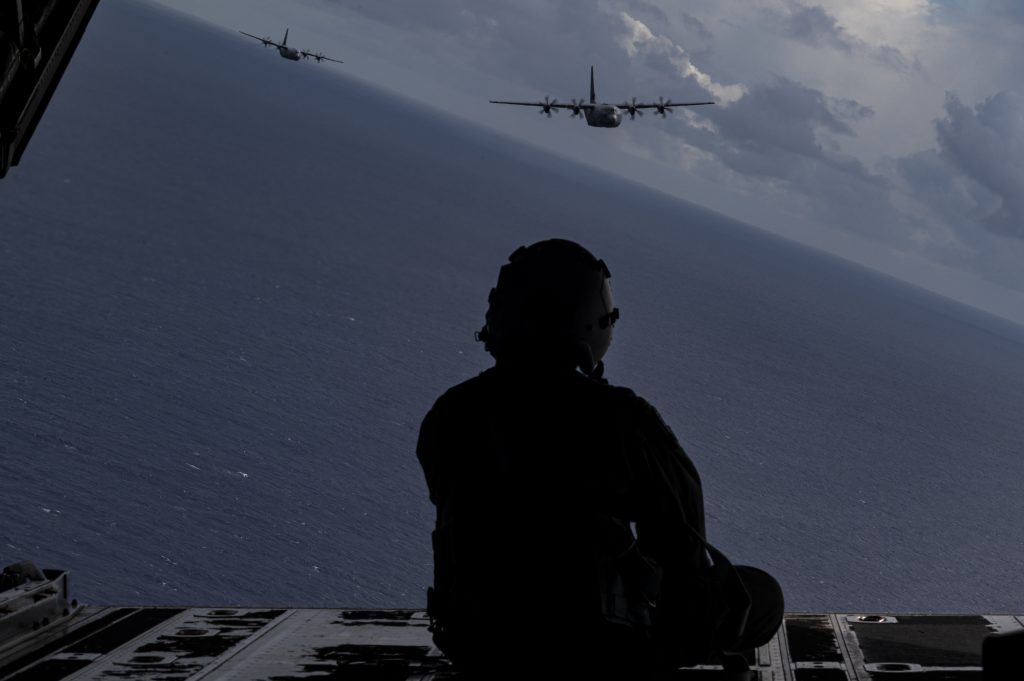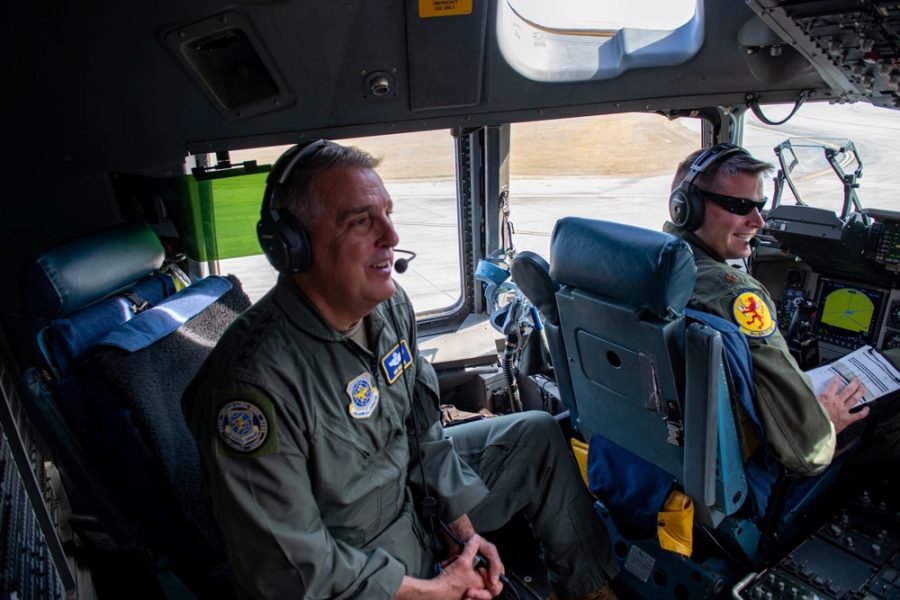Coming off of a massive exercise over the Pacific Ocean this summer, Gen, Mike Minihan, head of Air Mobility Command, says improving the connectivity between mobility air and ground crews is the best investment the Air Force can make for preparing the enterprise to operate across the vast reaches of the Pacific.
Connectivity in the mobility world usually involves a line-of-sight radio, Minihan told Air & Space Forces Magazine in a recent interview. But modern crews will need a variety of tools including radios, satellites and LINc-type devices so that Airmen can communicate within and beyond line-of-sight, relay both classified and unclassified information, and have layers of redundancy should one or more tools fail.
“The first and largest contribution [connectivity] has is to survivability,” Minihan said. “When I can understand exactly where the blue [friendly] forces are and exactly where the red forces are, and I don’t have to transmit to understand that lay-down, then mobility will have the ability to, one, operate in a higher-contested environment, and, two, support the joint team so that they can operate in a higher-contested environment.”

Mobility Airmen are already experimenting with a few gadgets that could enable connectivity with minimal changes to the fleet. The Utah Air National Guard flies a KC-135 refueling tanker equipped with datalink and beyond-line-of-sight communication technologies that make up its “real-time information in the cockpit” (RTIC) system, which displays threats, target data and the locations of allies on a display on the flight deck.
“For years, I have relied on AWACS or receiver aircraft, a grease pencil, and a laminated chart to build a real-time combat picture,” Lt. Col. Jeff Gould, a Utah Guardsman, said in a 2021 press release about the system. “With RTIC, my ability to gain situational awareness is near instantaneous and much more accurate.”
Minihan stressed that RTIC technologies must be easy to install onto existing aircraft “without having to take the airplane completely apart … so roll-on, roll-off,” he said. “Take advantage of systems that already exist, and instantly improve the connectivity of the entire mobility fleet.”
The general’s goal is to connect 25 percent of the fleet by 2025. He also wants to better connect his ground elements: the air operations centers, air mobility operations wings, and contingency response groups which command and control, maintain aircraft, move cargo, and open airfields downrange.
“I want to make an aggressive move here, because I believe this is value that exists,” Minihan said.
Funding is the main obstacle. Air Mobility Command estimates the effort will cost about $500 million and “will take aggressive approaches in the near term to get there, such as implementing a Commander’s withhold and re-prioritizing end-of-year purchases to the max extent possible,” a spokesperson said in a statement sent to Air & Space Forces Magazine. “The Command also acknowledges it’ll need external help, such as rapid contracting and aircraft modification capacity.”
Minihan said he hopes to convey “a deep and deliberate message when it comes to the importance of this connectivity and showing the value to the joint team. Showing the value to both the deterrence lens and also the ‘win-decisively’ lens is going to be key to that funding.”

Minihan’s call for connectivity complements Combined Joint All-Domain Command and Control, the Pentagon’s sweeping plan to connect sensors and shooters across the globe. The network will necessarily require a broad range of devices and investments, Air Force officials have said.
Better connectivity could also help Air Mobility Command shore up three key areas for improvement which Minihan identified in Mobility Guardian 2023, the massive exercise in which 70 aircraft, 3,000 personnel and several international partners practiced moving troops and supplies across the Pacific for two weeks:
- Command and control
- Command relationships
- “Exploding into theater”
Besides the connection to successful command and control, connectivity also contributes to command relationships, Minihan said, highlighting unity of effort as the “magic” behind successful operations, particularly in a wide conflict where mobility Airmen will likely serve multiple commanders and priorities.
During Mobility Guardian, Minihan said he noticed a lack of unity when two C-17s from two different units landed at the same airfield at the same time. While each crew was executing a mission as tasked, there could have been better coordination between the two Air Operations Centers overseeing them. Having both C-17s on the ground at the same time could expose the jets to greater risk from enemy fire, especially at smaller airfields where maintenance, fueling, loading and unloading can take a while, Minihan said.
“We create efficiency as well as effectiveness when we have unity of effort,” he said.
‘Exploding into theater’ involves quickly getting Airmen into place to serve the joint force in an unfamiliar environment. Minihan wants his troops to “understand the urgency for which they need to get into theater,” he said.
